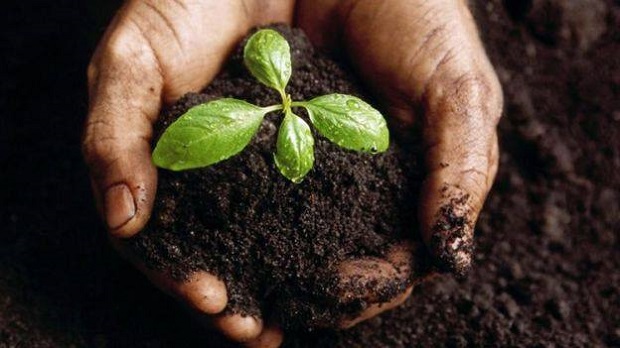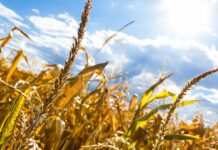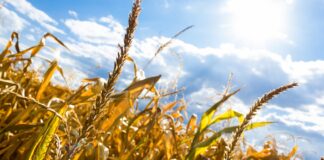 Coffee processing, from the field to the cup, generate a great deal of waste, among others, fruit pulp, pericarp, vellum, silverskin and extraction waste. The elimination of these materials is a problem or a missed opportunity, both in environmental and economic terms. Among different types of waste produced during coffee processing, coffee silverskin is worthy of special attention as after desiccation, it remains in good condition for a long time; in some countries it is already used as soil fertilizer or combustible fuel. That use responds to a logic of energy cost saving, waste disposal and smart management of resources, with a view of reducing the impact on the environment.
Coffee processing, from the field to the cup, generate a great deal of waste, among others, fruit pulp, pericarp, vellum, silverskin and extraction waste. The elimination of these materials is a problem or a missed opportunity, both in environmental and economic terms. Among different types of waste produced during coffee processing, coffee silverskin is worthy of special attention as after desiccation, it remains in good condition for a long time; in some countries it is already used as soil fertilizer or combustible fuel. That use responds to a logic of energy cost saving, waste disposal and smart management of resources, with a view of reducing the impact on the environment.
The silverskin is a fine integument that covers and protects the external layer of the seed, grossly called grain, of green coffee. It is partially taken off in field, during desiccation and removal of coffee seeds from the fruits, and partly during roasting. Numerous authors have suggested reusing the silverskin as a source of natural compounds (e.g. polyphenols, dietary fiber, xantyne) useful for formulating food supplements or natural herbal medications.
Yet, no researcher has investigated the presence of possible contaminants or potentially toxic substances for human health.
The research group of the Centro di Innovazione dei Rifiuti Alimentari [Food Waste Innovation Center] coordinated by Professor Tullia Gallina Toschi conducted a study on the composition and the properties of the silverskin, the results of which were recently published in the Journal of Agricultural and Food Chemistry [1]. The study highlighted the presence of substances such as ochratoxin A, which is nephrotoxic and currently classified by IARC as possibly carcinogenic (group 2B) [2], and phytosterol oxides, the substances involved in various bio-processes ( atherosclerosis, inflammation, oxidative stress, etc.) [3].
The research focused on the chemical composition of the silverskin, which in 70-79% consists of dietary fiber (15% soluble fiber), cellulose and hemicellulose (around 15%), in about 5% of fat and important bio-functional molecules such as caffeine (0.9%) and polyphenolic compounds (0.6%). Thus the silverskin may certainly be promising also for the nutritional purpose. However, the levels of ochratoxin A which are around three times as higher than the limit for the roasted coffee allowed in Europe [4] and those of phytosterol oxides (which account for about 48% of total sterols) are the other side of the coin. The reason for the pollution caused by the silverskin and its bad oxidation property are related to the role it plays; it covers the coffee grain, it is extremely exposed to the oxidative action of the oxygen and, considering the results obtain, it is thus always advisable, if preliminary treatments are to be avoided or if the necessary measures for the “food grade” use may not be ensured, it is thus always advisable to apply it as a source of cellulose in the production of paper.
In turn the use as a source of bioactive compounds (extracts), that is as ingredient to develop functional food or cosmetics, should be assessed by taking account of the entire production cycle and applying washing treatments to remove the toxins; a direct use as food product for the direct extraction (slimming tea), wrongly advised by some authors, actually could not be free from risks and for the time being, it may absolutely may not be recommended.
Vladimiro Cardenia
(Centro di Innovazione dei Rifiuti Alimentari, Alma Mater Studiorum – University of Bologna)
Tullia Gallina Toschi
(Centro di Innovazione dei Rifiuti Alimentari, Alma Mater Studiorum – University of Bologna)
Sources:
[1] T. Gallina Toschi, V. Cardenia, G. Bonaga, M. Mandrioli, M.T. Rodriguez-Estrada, Coffee Silverskin: Characterization, Possible Uses, and Safety Aspects, Journal of Agricultural and Food Chemistry. 62 (2014) 10836–10844.
[2] IARC, Ochratoxin A Monograph on the evaluation of carcinogenic risk to humans. Volume 56 Some Naturally Occurring Substances : Food Items and Constituents , Heterocyclic Aromatic Amines and Mycotoxins, in: Lyon (Lyon: IARC): International Agency of Research on Cancer, 1993: p. 489.
[3] Y. O’Callaghan, F.O. McCarthy, N.M. O’Brien, Recent advances in Phytosterol Oxidation Products., Biochemical and Biophysical Research Communications. (2014) 1–6.
[4] Commission Regulation (EC), Setting maximum levels for certain contaminants in foodstuffs, Official Journal of European Communities. L 364/5 (2006) 5–24.
Per ricevere quotidianamente i nostri aggiornamenti su energia e transizione ecologica, basta iscriversi alla nostra newsletter gratuita
e riproduzione totale o parziale in qualunque formato degli articoli presenti sul sito.


















